Food Prices for Nutrition provides governments and development agencies with accurate metrics to inform policy interventions and monitor progress towards achieving food security and nutrition goals. These metrics consist of global statistics on the cost and affordability of a healthy diet and other related indicators and draw on food price and expenditure data from the International Comparison Program. Food Prices for Nutrition is a partnership between Tufts University, the International Food Policy Research Institute (IFPRI), and the World Bank. Contact us at fpn@worldbank.org.
Measuring how easily people can access safe, sufficient, and nutritious food is crucial to tracking progress towards achieving food security – one of the most pressing development goals of recent times, especially in low- and lower-middle-income countries. The new online training course Cost and Affordability of a Healthy Diet and other Indicators from Food Prices for Nutrition introduces the concept of measuring the cost of a diet that supports an active life and long-term health using prices of locally-available foods, and subsequently assessing whether this cost is affordable to the local population.
This self-paced and free-to-access course, delivered through the World Bank’s Open Learning Campus, is targeted primarily towards analysts and policy makers in national governments and international organizations who monitor agricultural and food systems and make interventions beneficial to improving food security and nutrition. Researchers and many other users will also find it valuable to wider analyses.
Consisting of six in-depth modules, the interactive course provides an overview of the concepts, methodology, tools, data sources, and knowledge repositories utilized by Food Prices for Nutrition to compute cross-country comparable diet cost and affordability metrics. These indicators, available through the World Bank’s Databank and the Food and Agriculture Organization’s FAOSTAT, underlie the latest global estimates published in The State of Food Security and Nutrition in the World 2023 that a healthy diet cost on average $3.66 in purchasing power parity terms in 2021 and that more than 3.1 billion people (or 42% of the global population) could not afford a healthy diet in that year – an increase of 134 million people compared to 2019, before the onset of the COVID-19 pandemic.
The comprehensive course goes on to demonstrate, with examples, how the same methodological approach can be used at the national and sub-national levels to establish bespoke, country-specific indicators to gauge economic and physical access to diets that consist of not only adequate calories, but also the essential nutrients and food groups needed for an active and healthy life. These metrics would prioritize, where available, the published national food-based dietary guidelines for the country of interest which reflect local eating habits and culinary cultures alongside market availability of food items. Computation of two other dietary standards – a nutrient-adequate diet and an energy-sufficient diet – is also discussed in the course.
The emphasis on affordability encourages indicator compilers to seek out the least-cost foods available locally that meet the dietary standard. Food Prices for Nutrition draws on retail price data collected by the International Comparison Program and food composition data from the United States Department of Agriculture’s FoodData Central portal and the FAO/INFOODS Food Composition Table for Western Africa for its globally comparable metrics. The course trains users how to use such data to prepare a country-specific food price, energy, and nutrition database. It also alerts users to the technical assistance toolkit and food information database available through Tufts University designed to help convert any set of food price data into the least-cost per day of a healthy diet.
To examine the extent to which these least-cost diets are within reach of a country’s population, the course also explains the methodology behind the four affordability indicators produced by Food Prices for Nutrition, which draw on data based on the international poverty line, on expenditures made on food by households, and on income distributions within a country.
Applications of the methods and data are also discussed, with examples of research into subregional cost differences in Tanzania, the effect of seasonality on diet costs in Malawi and Ethiopia, and how the nutrient needs of different demographic populations impact the affordability of a diet showcased in the course.
In this blog, we have covered just some of the inputs into understanding and computing these metrics. Head over to Cost and Affordability of a Healthy Diet and other Indicators to find out more.
Please contact us at fpn@worldbank.org to discuss any aspect of the course and the application of these indicators.


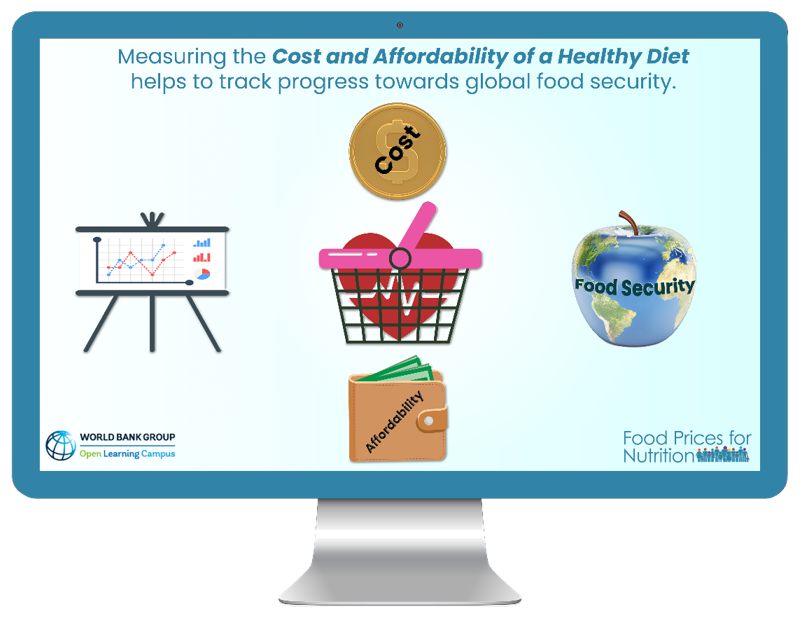
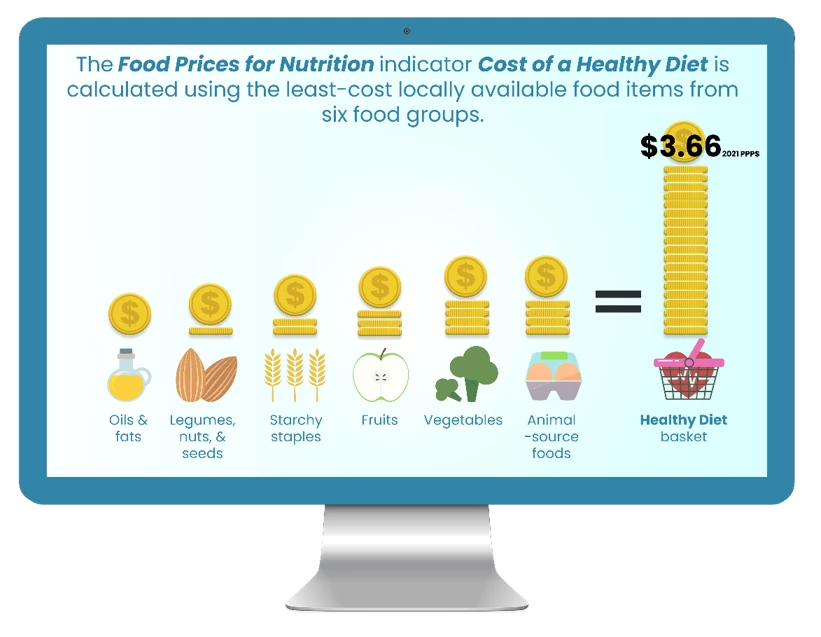
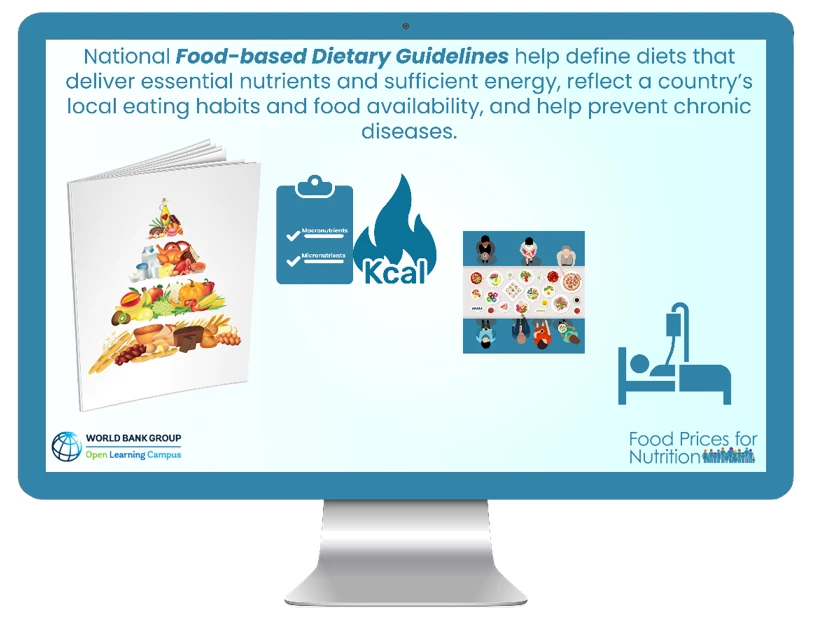
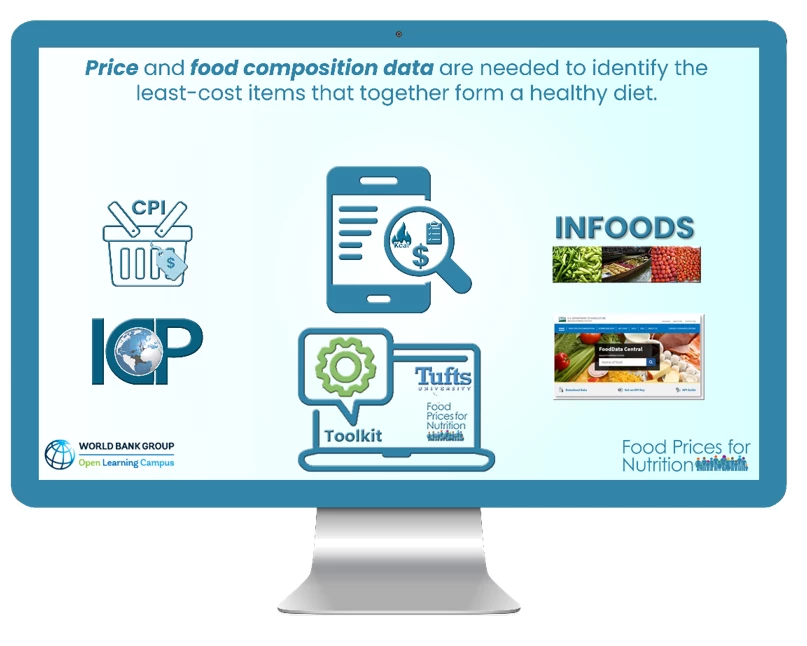
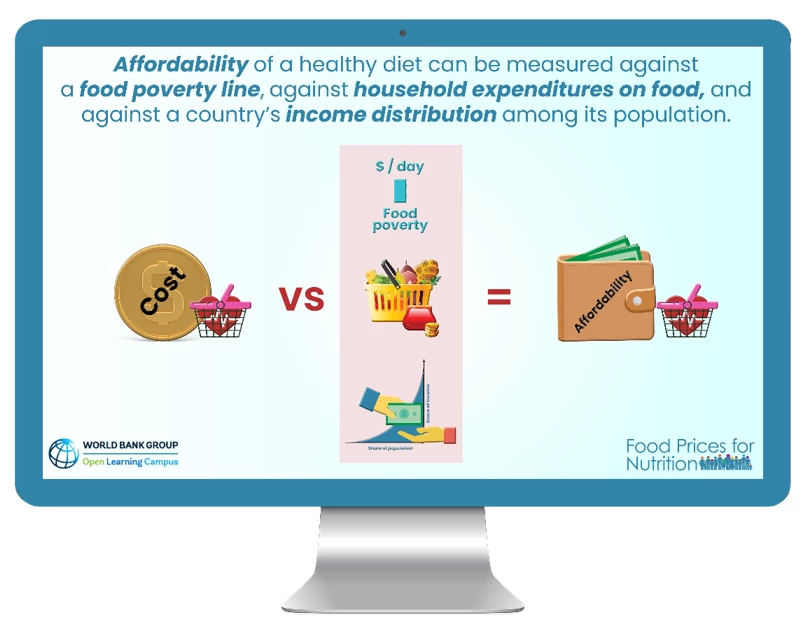




Join the Conversation